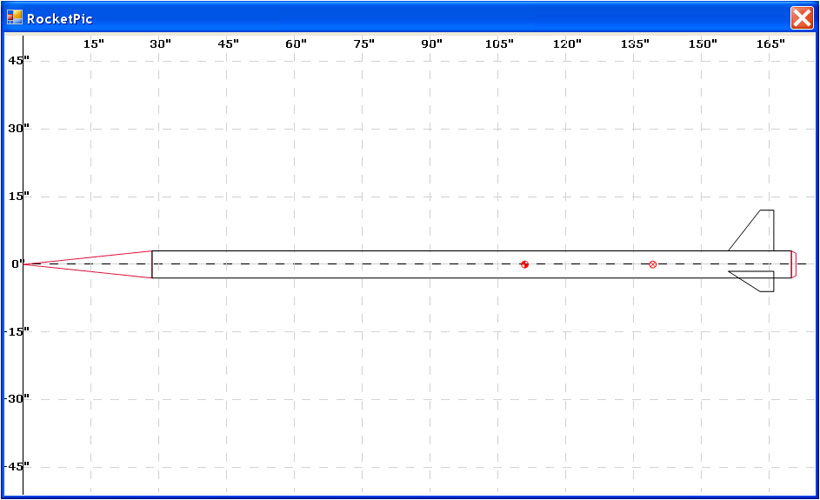
Presented below is a comparison of the RASAero II flight simulation with flight data for the Curt Newport and Jeff Taylor Proteus 6 rocket, which was powered by a P9381 rocket motor. The rocket was flown with an ARTS instrumentation and telemetry system. From the onboard measured acceleration the accelerometer-based apogee altitude, based on the average of the two onboard accelerometers, was 85067 ft. Barometric altimeter altitude data and GPS altitude data were recorded and transmitted during the parachute descent from 46000 ft to landing. The RASAero II rocket file for this rocket (Proteus6.alx1) is included in the RASAero II software download.

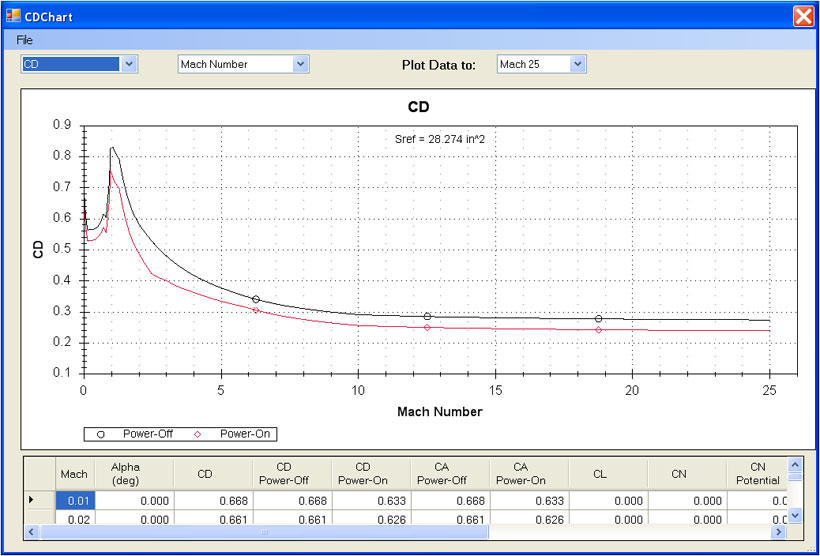
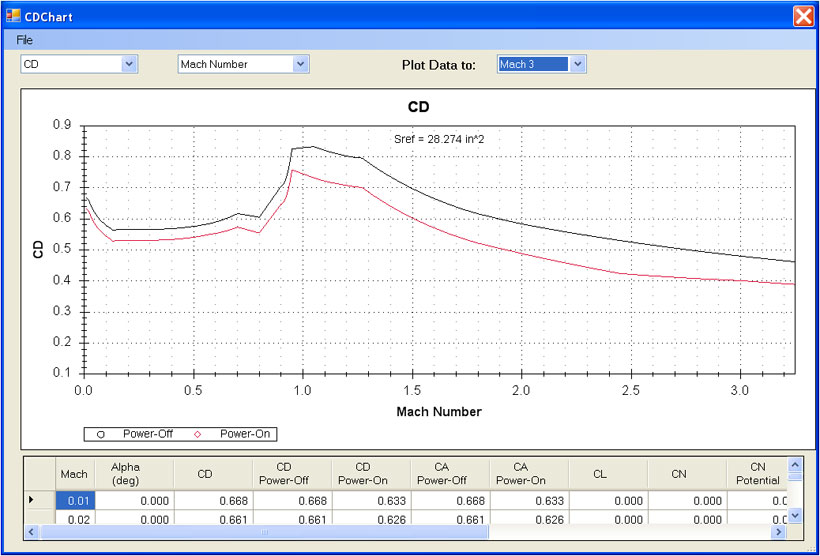
The Proteus 6 rocket used an X-form parachute, with the dimensions of each rectangle of the X-form being 73 inches by 19 inches. For entering X-form parachutes into the RASAero II software the X-form parachute area is converted to a circle with the same area, the circular area is then multiplied by 0.675 (for the difference in the drag coefficients used for X-form and hemispherical parachutes), and then the diameter of the new circular area is entered as the parachute diameter in the RASAero II software to run with the RASAero II built-in hemispherical parachute drag coefficient model. (For the Proteus 6 rocket the entered parachute diameter = 45.5 inches).
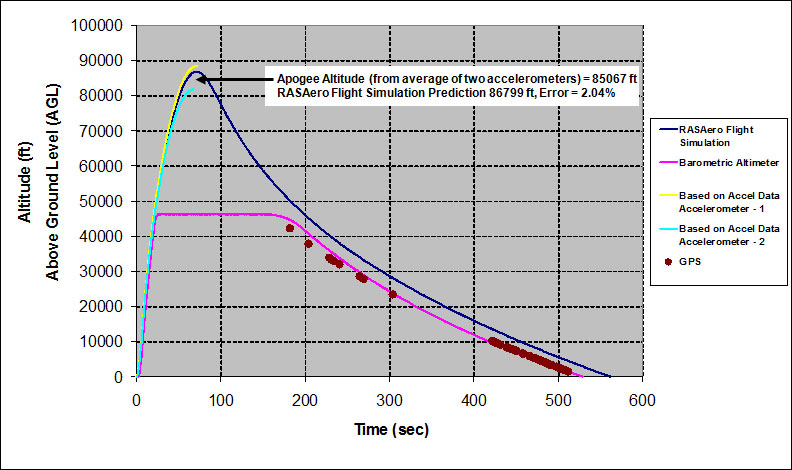
The RASAero II flight simulation predicted altitude versus time shows very good agreement with the accelerometer-based altitude versus time from the two onboard accelerometers during powered flight and coast to apogee. The accelerometer data stops at apogee, and would in any case be considered inaccurate during parachute descent. There is excellent agreement between the accelerometer-based altitude data and the barometric altimeter altitude data up to 46000 ft.
The RASAero II flight simulation predicted altitude is 86799 ft, an error of only 2.04% compared to the 85067 ft apogee altitude from the flight data based on the average of the apogee altitude from the two onboard accelerometers.
The onboard measured barometric altimeter altitude data and GPS altitude data stopped as the rocket passed through 46000 ft, and then resumed as the rocket descended back through 46000 ft during the parachute descent. The GPS altitude data for parachute descent only is presented above.
Note that there is excellent agreement between the barometric altimeter altitude data and the GPS altitude data during the parachute descent, and good agreement between the RASAero II flight simulation prediction and the flight data during the parachute descent.
Based on the accelerometer-based altitude data to apogee and the barometric altimeter altitude data to landing, the parachute descent time from apogee to landing was 529 sec. The RASAero II flight simulation predicted parachute descent time is 562 sec, an error of only 6.22% in the parachute descent time from apogee to landing.
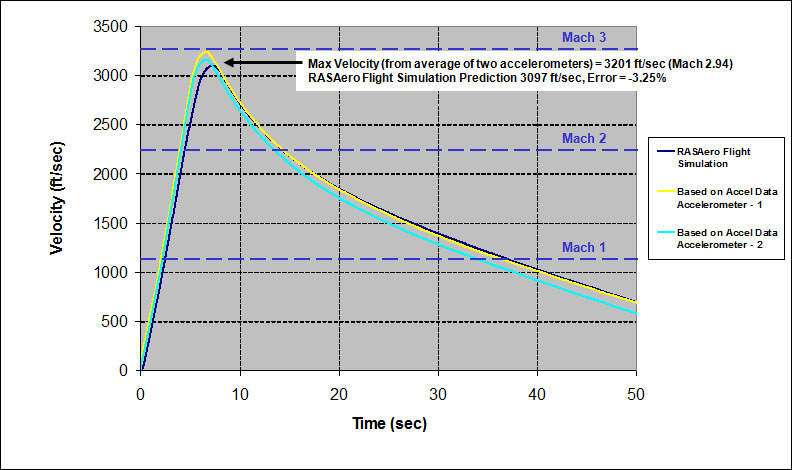
The RASAero II flight simulation predicted velocity versus time shows excellent agreement with the accelerometer-based velocity versus time from the two onboard accelerometers during powered flight to burnout and the initial part of the coast phase.
The RASAero II flight simulation predicted maximum velocity is 3097 ft/sec, an error of only -3.25% compared to the 3201 ft/sec from the flight data based on the average of the two onboard accelerometers. Based on the flight data the rocket reached a maximum Mach number of Mach 2.94.
Special thanks to Curt Newport, and Jeff Taylor from Loki Research, for providing the flight data and the rocket data for this rocket.